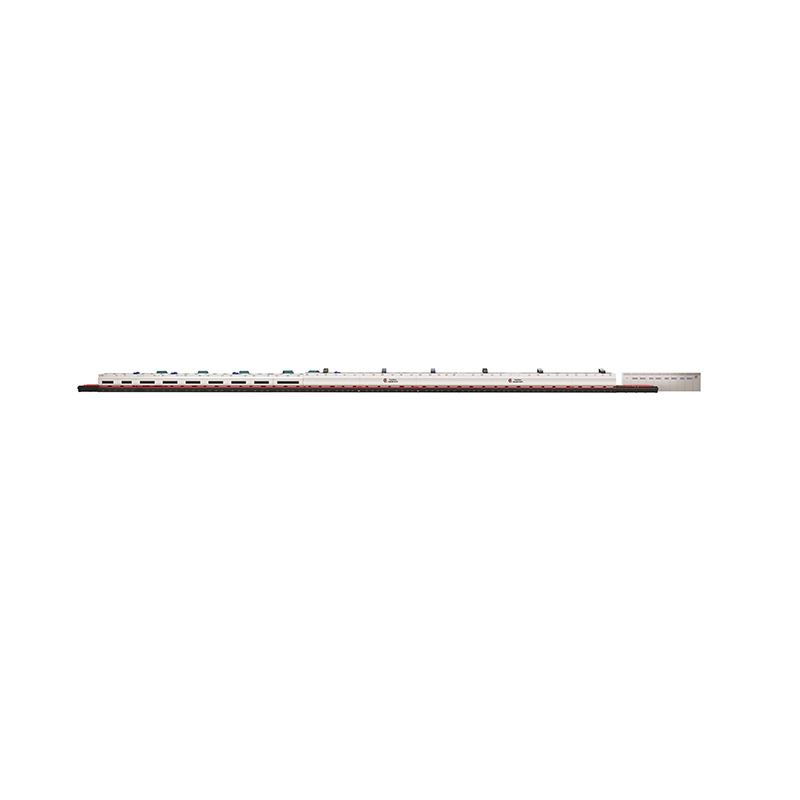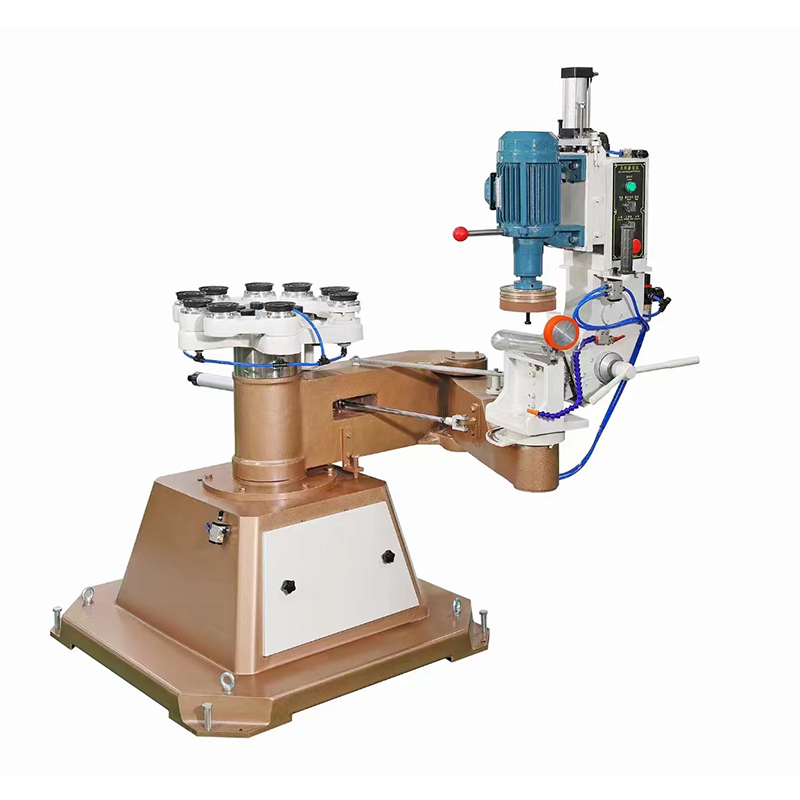Oct 25, 2023 | Featured Content, Chocolate, Front Feature
Suzanne Callander finds out why chocolate tempering is so important as a precursor to enrobing and looks in more depth at the enrobing process itself. Mappi Tempering Furnace

Chocolate tempering is central to the creation of fine chocolate and is considered by many chocolatiers as being both an art and a science. “It’s about making the chocolate look pretty and shiny and it’s about getting the process right too – bringing the chocolate to the right temperature before it can be used for moulding or enrobing,” says Dean Bingham, co-founder of US-based Dean’s Sweets.
The tempering process forces the crystals in chocolate to align and it is this that creates a crisp chocolate finish that is uniform in colour and has a satisfying snap and good mouth feel. According to Dean, poorly-tempered chocolate will have a streaky, cloudy appearance and will not have the same desirable snap as well tempered chocolate.
The traditional way to temper chocolate is by using a marble or granite countertop or slab, with melted chocolate being spread across the slab and swept back and forth with hand-held metal scrapers. The cooling and the stirring brings the chocolate to the correct temperature, briefly, so that the crystals align. Most chocolate producers today will instead use a tempering machine which, in simple terms, is a rotating kettle with a heater which melts the chocolate and keeps it moving, with a fixed baffle being used to separate the tempered chocolate from the untempered chocolate.
Dean’s Sweets undertakes the tempering process every day – to create chocolate to enrobe its range of truffles, caramels, and buttercreams and to create seasonal moulded items. “We melt the chocolate overnight, and in the morning turn the temperature down and add seed – in our case chocolate buttons. Within 20-30 minutes the chocolate will be tempered, with the tempering machine then keeping the chocolate at the right temperature until we need it for enrobing or moulding. The tempering machines which we have owned for well over a decade, is able to temper up to 240lbs per day. We recently purchased a new machine that can temper 400lbs per day and dispense chocolate into moulds in precise quantities which is very exciting for us.”
Keeping your temper
So, as Dean has pointed out, when it comes to chocolate production, pretty much everything revolves around getting the tempering process right and because it will define the quality of the finished product. However, it is also a challenges process, being one of the most potentially changeability elements of the production process, and one which is also susceptible to changes in temperature, humidity and moisture.
One producer of chocolate chips, with a very liquid and low viscosity chocolate, was faced with two problems. The first was that a standard depositor could not handle the mass, resulting in leaking pistons and the need for special depositor parts.
Its other problem was the size and thickness of the chips which had led to a lower throughput when using a traditional temper machine on this particular mass.
A tempering solution was found by Aasted with its StellaNova technology which gave the company the ability to adjust the exit temperature and the number of crystals separately, enabling it to make the chocolate more viscous so that a standard depositor was able to handle it without suffering from build-up in the hopper. Simultaneously, this also allowed for the same size and thickness chips and the same throughput as average chocolate chip production.
Prefamac Chocolate Machines developed its Clooney1 tempermeter to help chocolatiers ensure perfectly tempered chocolate for every batch and helping to avoid over- or under-crystallised chocolate.
The big advantage of the Prefamac solution is that the temper index is known within just five minutes and it also ensures that operators are quick to perform this necessary check.
How does it work? Once the machine is switched on its cooling unit will quickly reach a temperature of 8°C (constant) and it is then ready for use. A metal container, filled with the tempered chocolate, is inserted into the tempermeter, with a temperature sensor automatically being placed into the liquid chocolate.
Within five minutes the temper curve and the temper index will be displayed. The data can be printed or stored to enable comparisons between different curves to be analysed. The chocolate being tested in the device can then be recovered, so the technique does not result in any product being wasted.
The tempermeter works because the main component of chocolate is cocoa butter which is polymorphic – meaning it can occur in different crystal forms, which are created when the chocolate is cooled. The crystal shape in which cocoa butter mainly crystallises will determine the properties of the chocolate.
Beta V type crystals in particular are said to provide the best level of hardness, a shiny solid texture and a typical hollow sound when breaking the chocolate. The transition or phase transition is visible on the tempermeter screen. When and how fast this crystallisation process occurs will depend on the degree of tempering of the chocolate. In this way, a distinction can also be made between under-, over- and correctly tempered chocolate.
Once the chocolate is properly tempered, it can be used to enrobe confectionery, biscuits or other snacks with a layer of chocolate.
Traditionally chocolate enrobing involved manually dipping the product into tempered chocolate. Today, however, enrobing machines are able to speed up this process with products moving on a wire belt through a waterfall of liquid chocolate.
Many confectionery producers like the enrobing process because the resulting products do not look like they have been machine-produced. “The appearance of an enrobed product is much closer to that of handmade products,” explained a Sollich spokesperson. “In combination with the ability to decorate or sprinkle additional material onto the product, the variety of different finishes that a modern enrobing line can achieve is much higher than is possible with a moulding process.”
Sollich can provide both chocolate tempering and enrobing equipment and cites hygienic design as one of the most important considerations for anyone when looking at specifying equipment. Its Enromat M6 enrober, for example, has been designed for improved hygiene and makes it possible to incorporate automated clean-in-place (CIP) technology and also allows easy access to all parts for cleaning and maintenance. Customers can choose the grade of automation, depending on their requirements and how often cleaning is necessary.
Mads Hedstrøm, Board Member & Owner at Aasted agrees that cleanability is a big consideration when specifying tempering and enrobing equipment. “Cleanability features are essential because meeting strict hygiene and sanitation standards is vital for confectionery producers,” he says Tempering and enrobing equipment that is easy to clean and sanitise can help confectionery manufacturers comply with these health and safety regulations. “To reduce the risk of cross-contamination between different batches of products, we ensure our equipment is easy to clean and sanitise.”
However, hygienic design is not just about food safety though. Easy to clean equipment can also help lower the downtime connected with cleaning and maintenance between batches and this can result in increased overall productivity. Regular cleaning and maintenance of the machines will also help extend the life of the equipment as well as ensuring consistency in product texture, quality, and taste. Mads explained: “If a machine is complicated to clean, residues will build up, which can lead to corrosion, deterioration, or malfunctioning which will reduce the machine’s lifespan and will also lead to a change in product taste. This is why it is important that the design of the equipment allows for effective cleaning.” Of course, efficient cleaning and maintenance can also reduce labour costs and the quantity of cleaning agents required.
“Enrobing equipment that is easy to clean and maintain also allows for greater adaptability giving confectionery producers the ability to quicky change product formulations or manufacturing processes and rapid switches between product types without extended downtimes,” continues Mads. “I think we can safely say that cleanability features in enrobing equipment are fundamental for maintaining hygiene standards, regulatory compliance, product quality, and enhanced operational efficiency.”
Confectioners need to weigh up a variety of factors when deciding between enrobing and moulding processes for their confectionery. The enrobing process is often the preferred technique, when the confectionery necessitates a coating of chocolate, caramel or fondant. It helps achieve a consistent and smooth coating around the core product. “The enrobing process enables precise application of a variety of coatings on the same product, ensuring a uniform and visually appealing finish,” advises Mads. “It is an essential requirement, particularly for high-end or premium confectionery products. Moreover, enrobing can be advantageous for larger or irregularly shaped products that would pose challenges of moulded. Enrobing proves to be a faster and more efficient method for certain product types, enhancing production output.”
As a final though, enrobing chocolate has a few key advantages over the alternative moulding process. Production times are much faster, it is a cleaner process and will usually also be a lower cost solution. The speed at which enrobing machines are able to work today makes them a good choice for confectionery producers looking to fulfil more orders in a shorter period.
Editorial contact: Features Editor: Suzanne Callander scallander@kennedys.co.uk
READ THE LATEST ISSUE NOW

Automatic Glass Cutter Join our mailing list to receive the latest news and updates from our team.